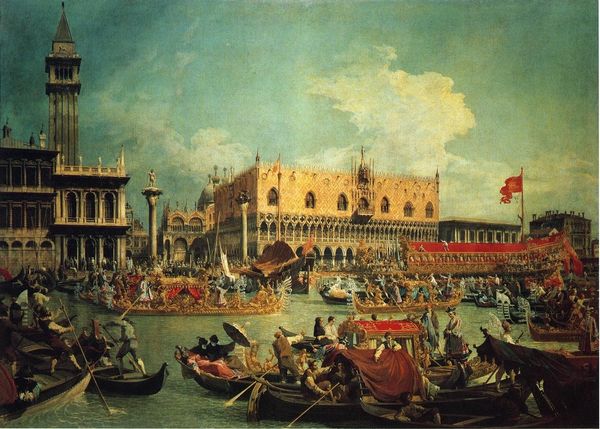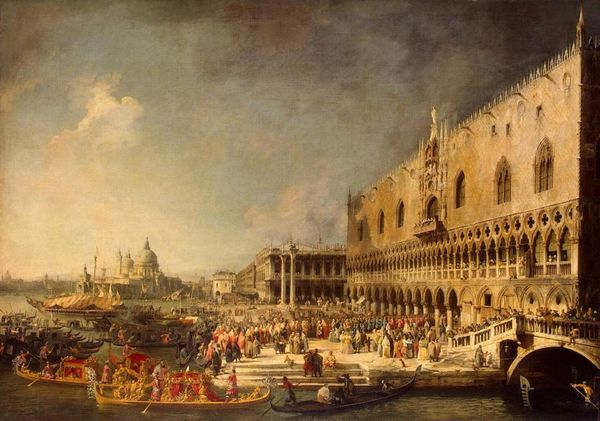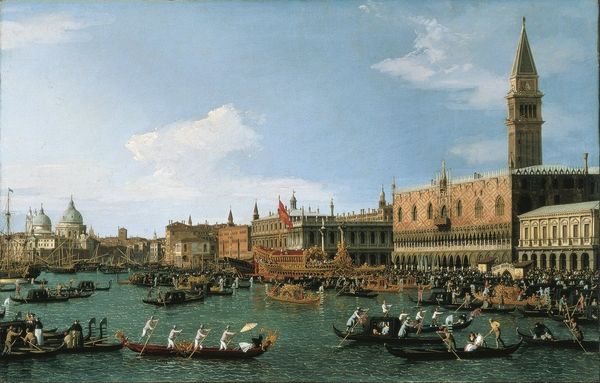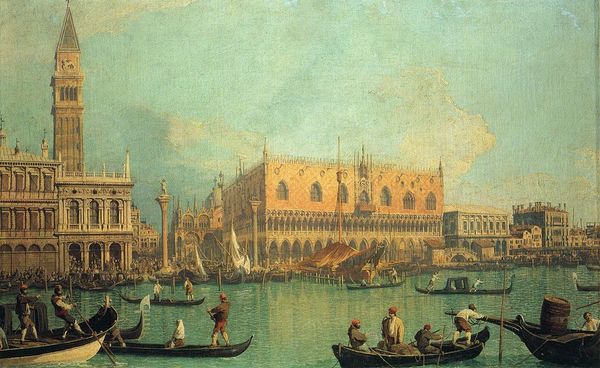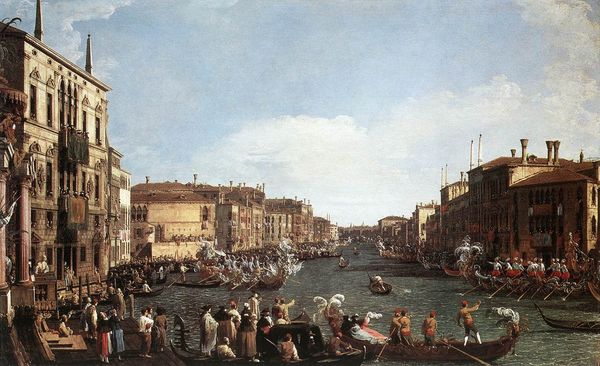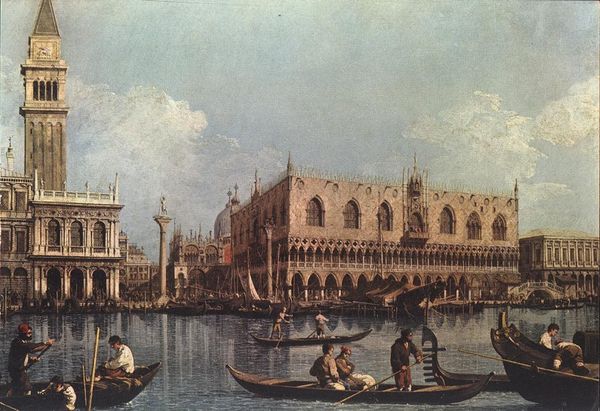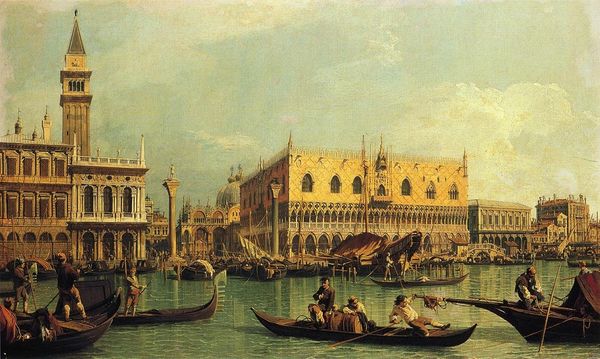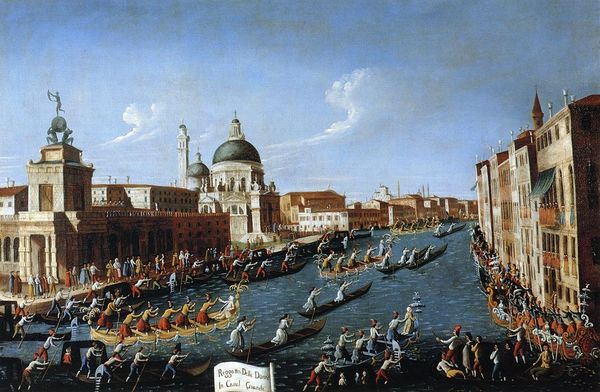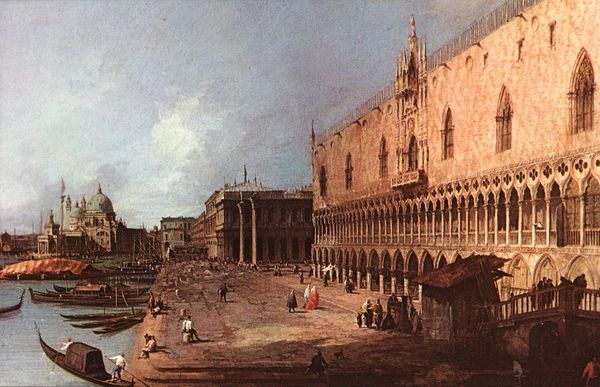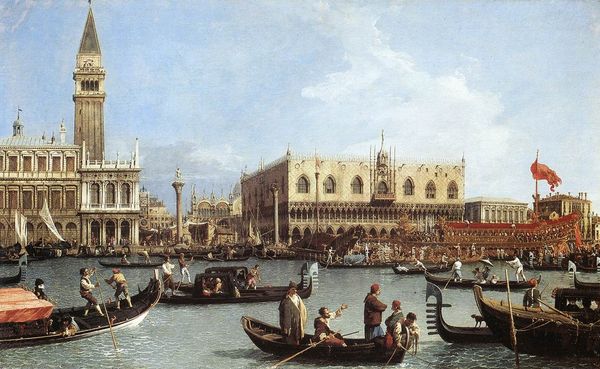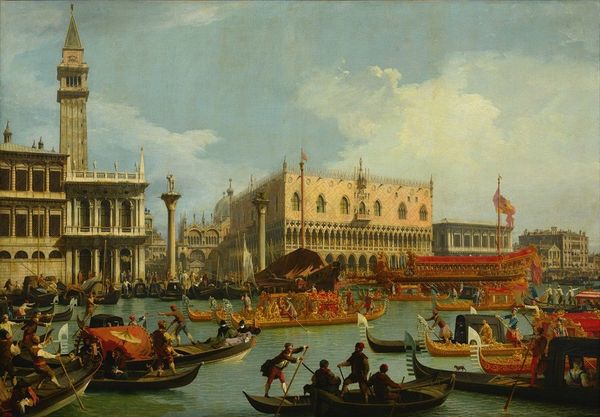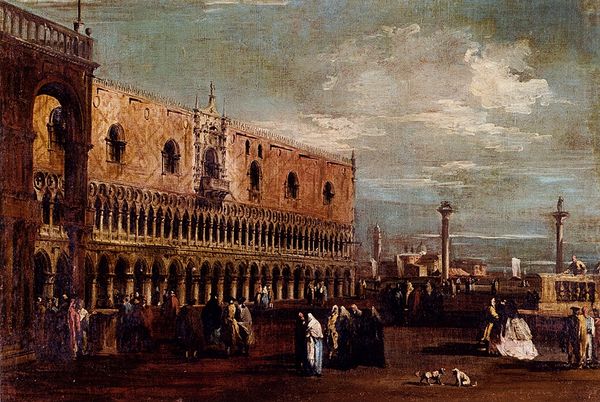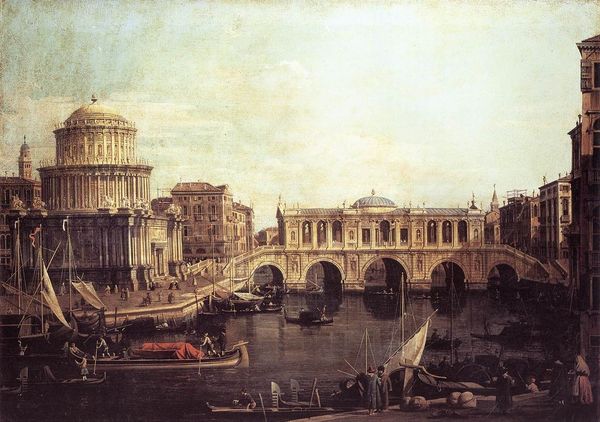
painting, oil-paint
#
urban landscape
#
venetian-painting
#
baroque
#
painting
#
oil-paint
#
landscape
#
classicism
#
cityscape
#
genre-painting
#
history-painting
Dimensions: 265 x 184 cm
Copyright: Public domain
Editor: This is Canaletto's "Reception of the Ambassador in the Doge's Palace," painted in 1730 with oils. It’s just teeming with people, boats, architecture… How would you interpret this kind of grand scene? Curator: It’s an orchestrated spectacle, isn't it? Consider the gondolas, adorned like mythological creatures – they aren’t simply boats but potent symbols of Venetian identity and power. This elaborate display tells us much about Venice's cultural memory, clinging to its history as a major mercantile power even as its political influence waned. What emotions do you think Canaletto tried to stir in viewers by focusing on this display of pageantry? Editor: Maybe a sense of pride? A yearning for that past power? It’s hard to say exactly, it almost feels performative now. Curator: Precisely. That performative aspect points to something crucial. Notice how Canaletto meticulously renders the Doge's Palace. What architectural details stand out to you? Editor: The intricate façade, all those arches, the Byzantine influence. Curator: Those Byzantine elements evoke a connection to Venice's past as a bridge between East and West. But, critically, he’s presenting an idealized version. The symbols of Venetian grandeur are carefully foregrounded to evoke feelings of cultural continuity. Does the detailed portrayal affect how you view it? Editor: I see. So the symbolism isn't just in the objects themselves, but in the act of portraying them so meticulously. It’s almost like the painting is trying to solidify a particular narrative. Curator: Exactly! Canaletto is intentionally curating our perception of Venice, presenting an image designed to resonate with specific values. The past is always a construction, and this painting reveals how symbols can serve that purpose. Editor: That makes me see the painting in a totally different way, less a literal depiction, and more as a deliberate statement. Thank you for that insight.
Comments
No comments
Be the first to comment and join the conversation on the ultimate creative platform.
